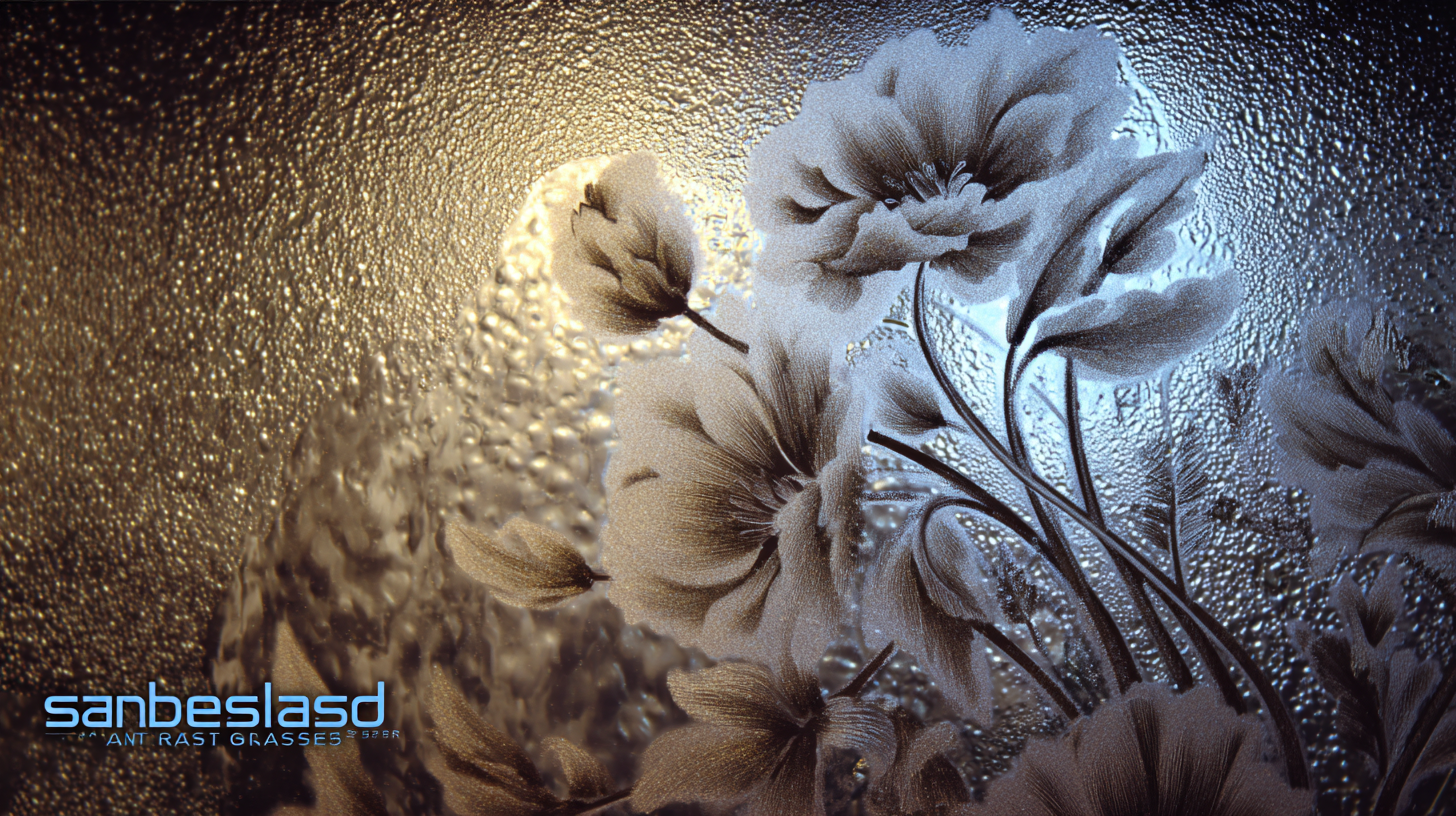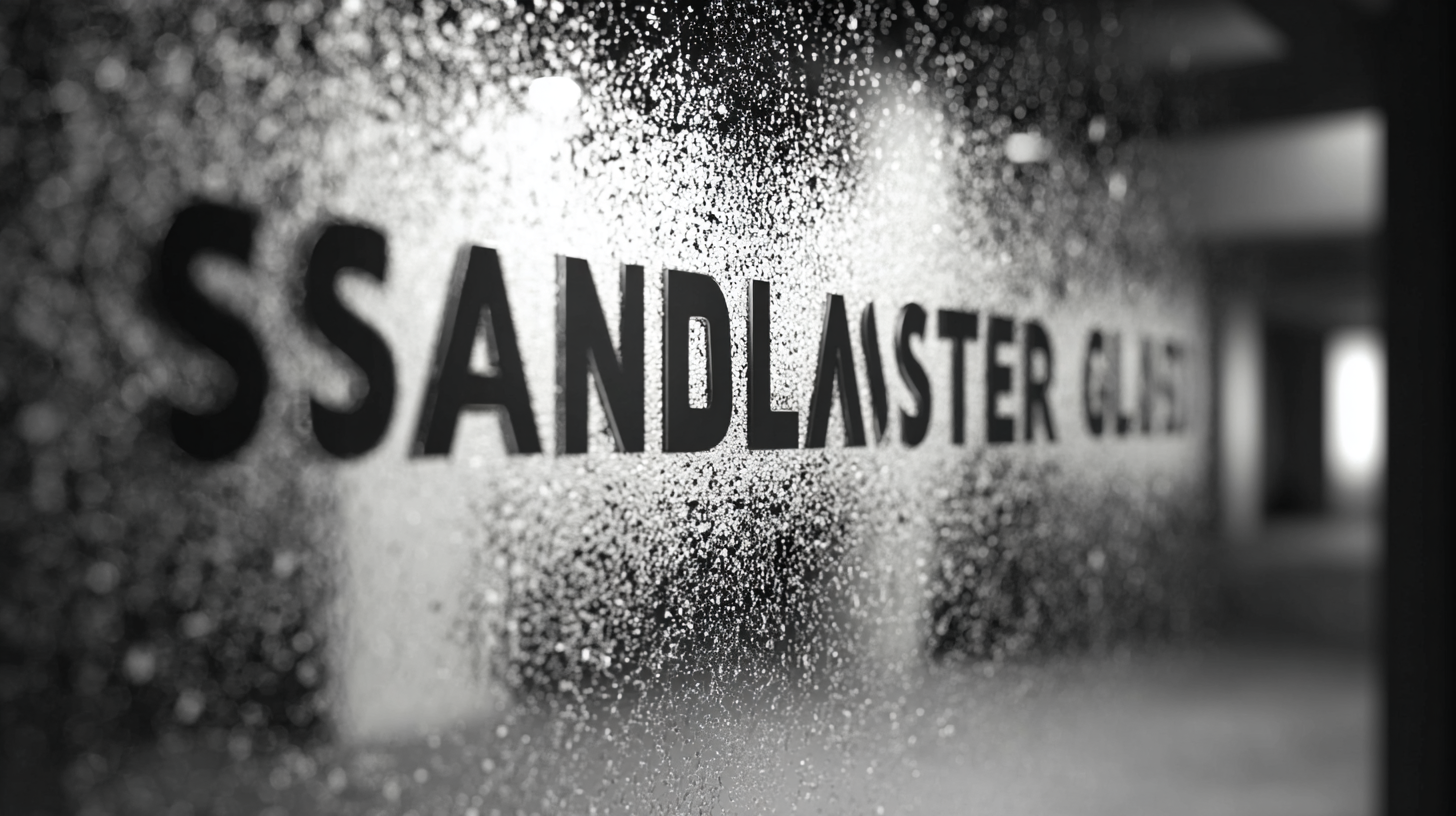
In the world of interior design and architectural projects, selecting the right materials can greatly influence the overall aesthetic and functionality of a space. Among the diverse range of materials available, Sandblasted Glass stands out for its unique ability to combine elegance with practicality. This tutorial aims to guide you through the essential considerations and techniques for choosing the best Sandblasted Glass for your specific projects.

From understanding the different types and applications of sandblasted finishes to evaluating factors such as thickness, texture, and durability, we will explore how this versatile material can transform your designs. Whether you are renovating a bathroom, designing a modern office, or adding a touch of sophistication to your home decor, mastering the art of selecting the right Sandblasted Glass is crucial for achieving stunning and lasting results.
Sandblasted glass has become a cornerstone in modern design, offering a unique blend of aesthetics and functionality. Its matte finish not only enhances light diffusion but also adds a layer of privacy, making it an ideal choice for residential and commercial spaces alike. A study by the Glass Association notes that the use of sandblasted glass has increased by 25% in interior applications over the last three years, reflecting its growing popularity among architects and designers. This trend emphasizes the material's adaptability in various environments, from sleek office partitions to beautiful decorative panels in homes.
When selecting sandblasted glass for your project, consider the desired level of opacity. The finer the sand used in the blasting process, the softer the finish will appear, and vice versa. Tip: For a subtle touch of elegance, opt for a satin finish, which can create a warm glow without compromising visibility too much. Additionally, always check the durability ratings; according to industry reports, sandblasted glass can withstand wear and tear better than conventional materials when properly treated.
Another key benefit of sandblasted glass is its ability to serve as a canvas for creativity. Custom patterns and designs can be integrated into the glass, providing endless possibilities for personalization. Tip: Work with experienced artisans when designing to ensure that the quality of sandblasting maintains the integrity of the glass, avoiding issues like fracturing or peeling. This way, you not only achieve the desired look but also ensure longevity in your design choices.
When selecting sandblasted glass for your projects, there are several key factors to consider that can significantly impact both the aesthetic and functional quality of the finished product. First, think about the level of transparency required. Sandblasted glass can vary in opacity, allowing you to control the amount of light and visibility. If you desire a more private space while still allowing natural light to filter through, a medium level of sandblasting may be optimal.
Next, consider the intended application of the glass. For instance, in architectural projects, sandblasted glass can serve as both a decorative and practical element. It can be used in partitions, doors, or even as a unique feature within windows. The durability of the glass should also be taken into account, especially for outdoor applications where exposure to the elements is a concern. Ensuring that the sandblasted finish complements your overall design vision while meeting the necessary performance standards is crucial for achieving the perfect balance in your project.
 Sandblasting, a prevalent technique in the glass industry, enhances both the aesthetics and functionality of glass surfaces. The process involves propelling fine particles at high velocity against glass, creating a frosted texture that can range from subtle to highly pronounced finishes. According to a report by Smithers Pira, the global market for sandblasted glass is projected to grow by 3.6% annually, driven by increasing demands in architectural designs and interior decor. The effectiveness of sandblasting hinges on various techniques that influence glass quality, including the size and type of abrasive material used, as well as the pressure and angle of application.
Sandblasting, a prevalent technique in the glass industry, enhances both the aesthetics and functionality of glass surfaces. The process involves propelling fine particles at high velocity against glass, creating a frosted texture that can range from subtle to highly pronounced finishes. According to a report by Smithers Pira, the global market for sandblasted glass is projected to grow by 3.6% annually, driven by increasing demands in architectural designs and interior decor. The effectiveness of sandblasting hinges on various techniques that influence glass quality, including the size and type of abrasive material used, as well as the pressure and angle of application.
Different types of abrasives can significantly affect the final appearance and durability of sandblasted glass. For instance, aluminum oxide is often preferred for its sharpness and durability, providing a uniform finish with minimal surface imperfections. Industry research indicates that using the right combination of particle size and air pressure can yield a 20% improvement in surface smoothness, an essential factor for applications requiring precise glare reduction, such as in commercial settings. The choice of technique not only dictates the quality of the glass surface but also its potential applications, ranging from decorative pieces to functional installations like shower enclosures and privacy screens.
When selecting sandblasted glass for your projects, understanding the various styles and finishes is crucial. Sandblasting not only offers aesthetic appeal but also enhances functionality by providing privacy and reducing glare. According to a recent industry report by Grand View Research, the global glass processing market is expected to reach $194 billion by 2025, highlighting the increasing demand for unique glass applications, including sandblasted finishes.
There are numerous styles available, from frosted to patterned glass, catering to diverse design requirements. Frosted sandblasted glass, for example, is ideal for residential spaces, as it diffuses light while maintaining privacy. In contrast, patterned sandblasted glass can serve as a striking decorative element in commercial environments, creating eye-catching partitions.
**Tips:** When selecting sandblasted glass, consider the thickness and type of glass, as these factors influence durability and the quality of the finish. Additionally, it’s wise to work with reputable manufacturers to ensure precision in texture and design. Always request samples before finalizing your choice to ensure it meets your aesthetic and functional needs.
When it comes to selecting sandblasted glass for projects, understanding the quality assurance processes inherent in its production is crucial. Specifically, Chinese manufacturing standards play a significant role in determining the durability and aesthetic appeal of sandblasted glass. Chinese manufacturers have adopted stringent quality control measures to ensure that the glass meets international specifications. This includes rigorous testing for durability, clarity, and design fidelity, which collectively ensure that the end product not only looks stunning but also withstands the test of time.

The focus on quality assurance in sandblasted glass production involves detailed assessments at various stages of manufacturing. From selecting raw materials to the final finishing processes, each step is governed by strict regulations that are designed to uphold high standards. Manufacturers often employ advanced technology and skilled artisans who are trained to execute precise sandblasting techniques. This commitment to quality ensures that every piece of sandblasted glass that leaves the factory reflects the pinnacle of craftsmanship, making it an ideal choice for designers and architects looking for both beauty and reliability in their projects.